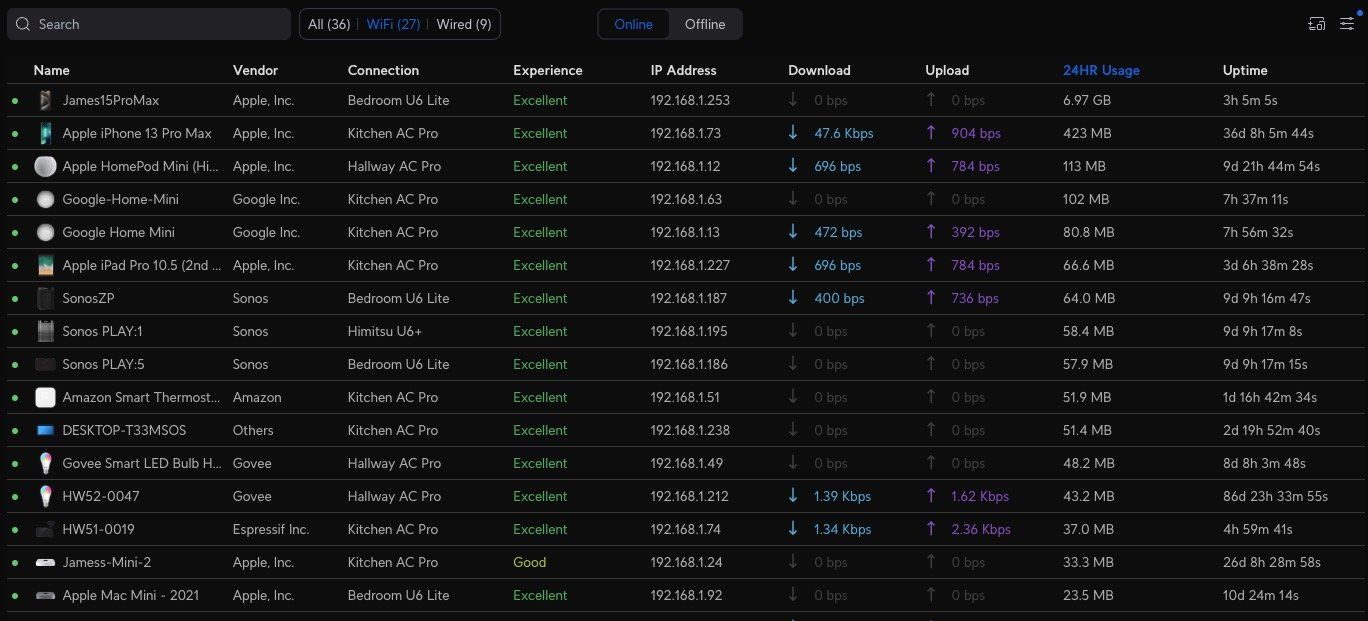Will Matter Cause Wireless Network Congestion?
The answer is complicated, but there are ways to mitigate any potential issues.

Please note: This page may contain affiliate links. Read our ethics policy
With so many devices running wirelessly, congestion on the airwaves is a uniquely modern problem. But will upgrading your house to a Matter-based smart home worsen the problem, causing yet more congestion—or will it even help?
The answer to both… it depends, but there are steps you can take to mitigate the problem and improve your wireless connectivity.
So let’s back up a little.
Are Matter devices wireless?
The Matter standard doesn’t actually dictate that the network protocol used has to be wireless.
Matter devices can run off an Ethernet cable, or Wi-Fi, or Thread (What is Thread?), with the initial device "provisioning" (that means adding it to your home) done over Bluetooth.
But most smart home sensors and devices are wireless by nature. Much as I would love an Ethernet port on everything, it’s inconvenient, and most people don’t hardwire every room.
Smart home devices that run on Wi-Fi will, obviously, use Wi-Fi bandwidth and, therefore, cause congestion, depending on how active they are. But Wi-Fi is very power-hungry, so it’s rarely used in devices that run off a battery.
So what about Thread devices—will they cause Wi-Fi congestion? Here’s where things get really complicated.
A brief history of smart home protocols
Until Matter came along, two wireless protocols dominated the smart home: Z-Wave, and Zigbee. Both are mesh networks and very power efficient, and both need a hub of some sort to manage the network.
Z-Wave runs around the 900MHz spectrum, which puts it well out of the range of any home Wi-Fi. This is why it’s the preferred network for things like security devices when it’s critical that they don’t suffer any interference. Z-Wave devices have minimal impact on any wireless connectivity in your home. From personal experience, Z-Wave is annoying in every other aspect, but at least it doesn't cause interference.
Zigbee, on the other hand, uses the 2.4GHz range, which you might think sounds familiar—and you'd be right, because it’s the same range as home Wi-Fi. A house covered with Zigbee devices will experience some congestion on the Wi-Fi, in just the same way an apartment might in an inner city environment with lots of Wi-Fi networks.
Enter: Thread
Just like Zigbee and Z-Wave, Thread is a separate wireless network, which is why you need a Thread Border Router to connect your existing home network to a new, mesh-based Thread network (What is a Thread Border Router?)
Unlike Zigbee, Thread talks the same language as your home Wi-Fi, so your Border Router doesn’t need to translate messages from one form to another—just transfer them across the networks at a hardware level.
Thread shares some similarities with Zigbee, in that it uses the same radio standards. As such, it runs on 2.4GHz—and it too may cause congestion on your Wi-Fi network.
So Matter will cause more Wi-Fi congestion, then?
If you buy a bunch of Matter over Thread sensors, and we’ve said they run on the same frequency as home Wi-Fi, then it must cause congestion. Right?

Not so fast!
Wi-Fi comes in two flavors. 2.4GHz Wi-Fi is slower, but better at going through walls and can therefore travel longer distances.
5GHz (and the newer 6GHz) Wi-Fi is much faster, but really bad at going through obstacles.
If you have a single Wi-Fi router in your home with separate 2.4GHz and 5GHz networks, you can easily see this for yourself. You’ll be able to receive both the 5GHz and 2.4GHz Wi-Fi network in the room that router is in. Move to the other side of the house, and you’ll only be able to see the 2.4GHz network. It travels further.
If you have a dual-band network—that is, both frequencies broadcasting on the same Wi-Fi name—this is invisible to you. No matter where you go in your home, you’ll see your Wi-Fi is available. But if you do a speed test, you might notice faster downloads—or better streaming quality—only when closer to your router; that’s because your phone will have automatically switched to using the 5GHz network.
Because the 2.4GHz signal is better at going through walls and travelling further, you’ll find most smart home devices that run over Wi-Fi will only work the 2.4GHz network. That's why this frequency is also used for Thread sensors, which often need to travel through doors or walls. It’s just more reliable that way, and things like sensors don’t need a lot of speed or bandwidth.
So, the definite answer is: Matter over Thread devices may cause some additional congestion on your Wi-Fi, but only the 2.4GHz slow Wi-Fi.
What’s the solution to Wi-Fi congestion?
Use Ethernet where possible. I live by one simple rule: if it has an Ethernet port, plug it in. The more high-bandwidth devices like streaming TV dongles, laptops, and PCs you can from the wireless network, the better. You should only use Wi-Fi when absolutely necessary. Yes, this involves rewiring your home to include Ethernet in every room, but it’s worth it.
Install multiple Wireless Access Points. If you have a single router in one corner of your home, your Wi-Fi is already in a bad state; it is not the fault of any smart home gagdets. You likely have dead spots, interference from everything, and devices dropping off. The router supplied by your ISP usually isn’t that good anyway, and some can’t handle more a handful of wireless devices. A prosumer multiple access point system such as Unifi can ensure that everywhere in your home can access fast 5GHz Wi-Fi, meaning you can leave the slower 2.4GHz spectrum to aging hardware and low data smart home sensors. Although meshed systems are available, you'll again get the best performance if you can run network cables through the ceiling.

Stop worrying. Chances are, you won’t have enough devices to warrant Wi-Fi congestion being a real problem, and if you did, there are plenty of other things that cause interference anyway—from baby monitors to microwaves, Bluetooth headphones, and even unshielded USB 3.0 ports!
Modern routers are smart. Even though Wi-Fi runs at 2.4GHz, there are specific frequency ranges around that number that we divide up and call "channels"—usually in the range of 1-11. Most routers will automatically choose the best, least congested channel for you, but if you think your channel selection might be sub-optimal, most have a scan feature to manually check. You can also use an Android smartphone to do your own scan with an app like Netspot and find the least congested channel.
For most people the effect of the Thread network will be minimal, your router will be smart enough to handle it, and your Wi-Fi could do with an upgrade anyway.
About the Author

James Bruce
Smart Home Contributor, Videographer, and Developer
James spent seven years in Japan, where he brought technology into the classroom as a teacher and worked part-time as a data centre engineer. Formerly the CTO and Reviews Editor of MakeUseOf, he has also contributed to publications like TrustedReviews, WindowsReport, and MacObserver. With a BSc in Artificial Intelligence, James combines his technical expertise with a passion for writing, programming, and tech reviews. Now based in Cornwall, he enjoys the slower pace of rural life, building LEGO, playing board games, and diving into VR.